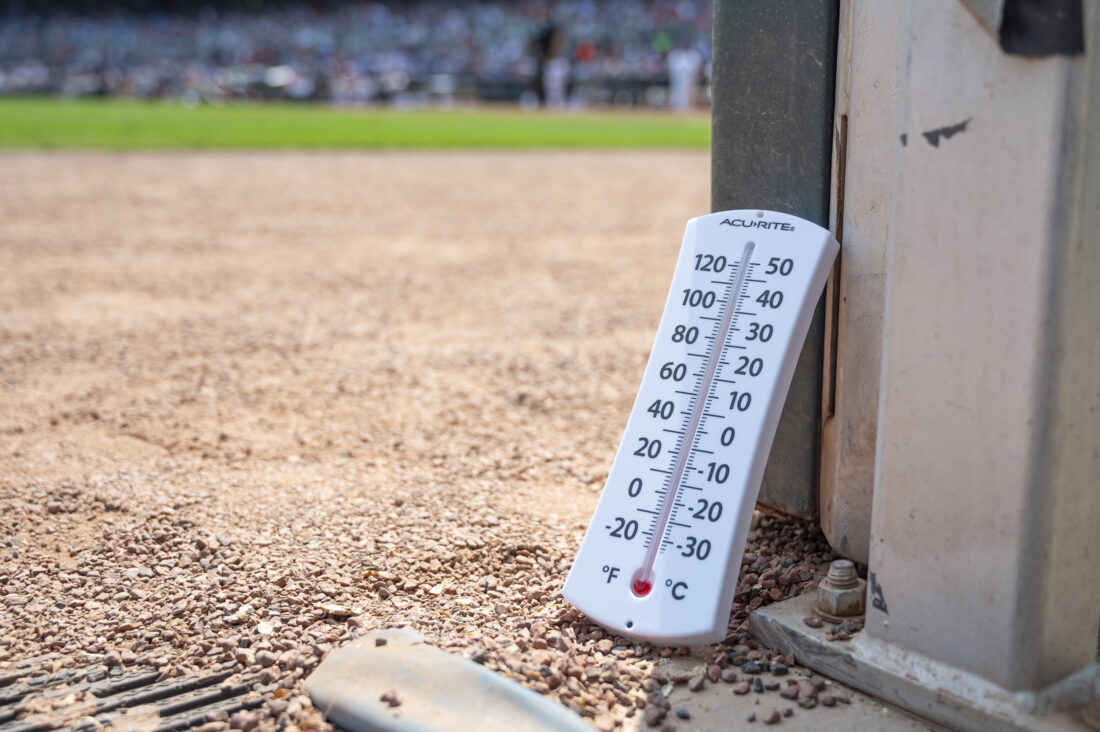If you’re old enough that your primary source of weather information was once a well-coiffed personality on the local news, you might recall when “heat index” and “wind chill” were cutting-edge forecast terms. A cable channel entirely devoted to weather introduced even catchier idioms like “thundersnow” and “bomb cyclone” into the lexicon. Now, during the heat wave that has been cooking much of the South this summer, you’ve likely heard various weather sources tossing around yet another odd-sounding word, “wet-bulb temperature,” and wondered what it means.

On its face, “wet-bulb temperature” is a measurement of heat and humidity. But it goes beyond the oft-reported “heat index,” which simply factors relative humidity into temperature to tell us how sultry conditions feel. What’s startling is that some experts are saying that wet-bulb temperatures have been approaching, sometimes even exceeding, the measurement of that metric at which humans can survive outdoors. Yikes.
The term derives from mercury thermometers, the sort with a little bulb at the bottom. The standard reading of such a thermometer is called “dry bulb” temperature. But if you wrap that bulb in a tiny wet bootie and whirl the thermometer around, the effect of evaporation also can be measured.
“Some of that water on the bootie will evaporate, and evaporation causes cooling and actually drops the thermometer temperature,” explains Dr. John Knox, an atmospheric scientist who researches the dynamics of weather and climate at the University of Georgia. “That’s how our bodies cool in hot conditions, by the evaporation of sweat on our skin.”
Great. Except that when humidity is high, the saturated air around us is considerably less efficient at evaporating that sweat. If that occurs on an already very hot day, bad stuff can happen. Bad stuff like your core temperature rising, nausea, disorientation, heat exhaustion, heat stroke.
So what is the danger zone when it comes to wet-bulb temperature? Research dating to 2010 calculated that a wet-bulb temperature of 95°F, the equivalent of 95°F at 100 percent humidity or 115°F at 50 percent humidity, is the upper limit of safety, even if you’re just resting in the shade. (A related metric, “wet-bulb globe temperature,” further measures the danger point for physical activity in the sun, but we’re not going to wade into that right now.) A recent, extensive study conducted at Penn State using young, healthy men and women suggests the limit may be lower, about 87°F at 100 percent humidity or 100°F at 60 percent humidity.
Many experts concur that the atmospheric conditions of this summer’s heat waves in the South and elsewhere potentially exceed either of those thresholds. According to Knox, the typical relative humidity on a hot summer day in the Deep South ranges from 40 to 60 percent, with a caveat that it’s a moving target and changes throughout the day. (Somewhat counterintuitively, the risk actually can be greater during a hot morning or evening, when humidity is often higher than at mid-afternoon.)
Does climate change play a role in this wet-bulb phenomenon? “The simple answer is yes,” Knox says. “Most of the planet is covered by water, and as the planet warms, ocean temperatures rise along with land temperatures. The more energy the ocean water has, the more evaporation takes place, which puts more moisture into the air. We’re observing this on a daily basis.”
That’s why we’re now hearing more about wet-bulb temperatures. They may be of special significance on Southern coasts. “Winds blowing moisture into an area jack up the dew points,” Knox says. “For instance, winds off the Gulf of Mexico will keep coastal areas moister than the Great Plains.” Floridians, already facing more than their share of climate woes, have extra reason for concern. “The ocean temperatures there,” Knox says, “have been off the charts.”








